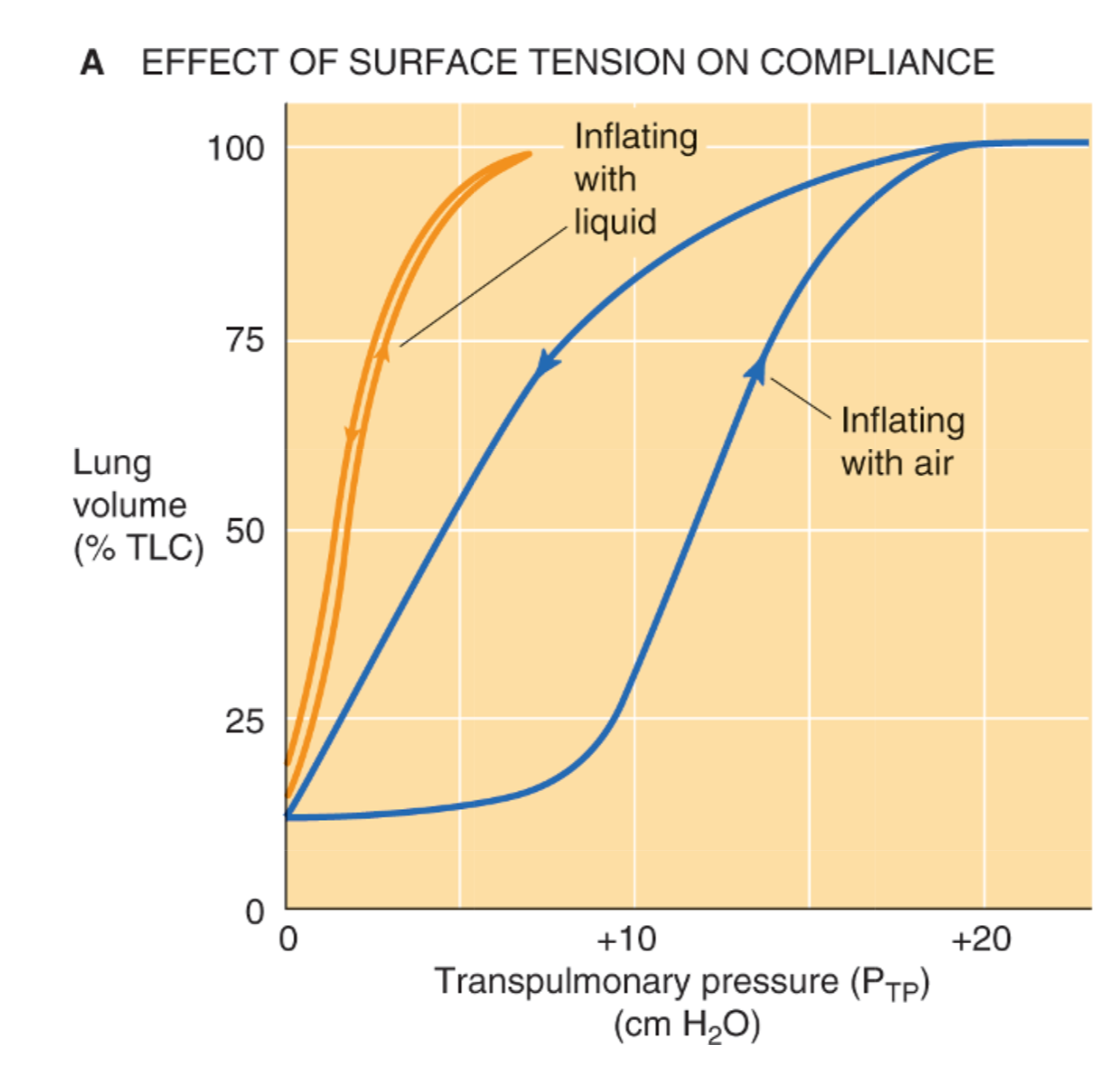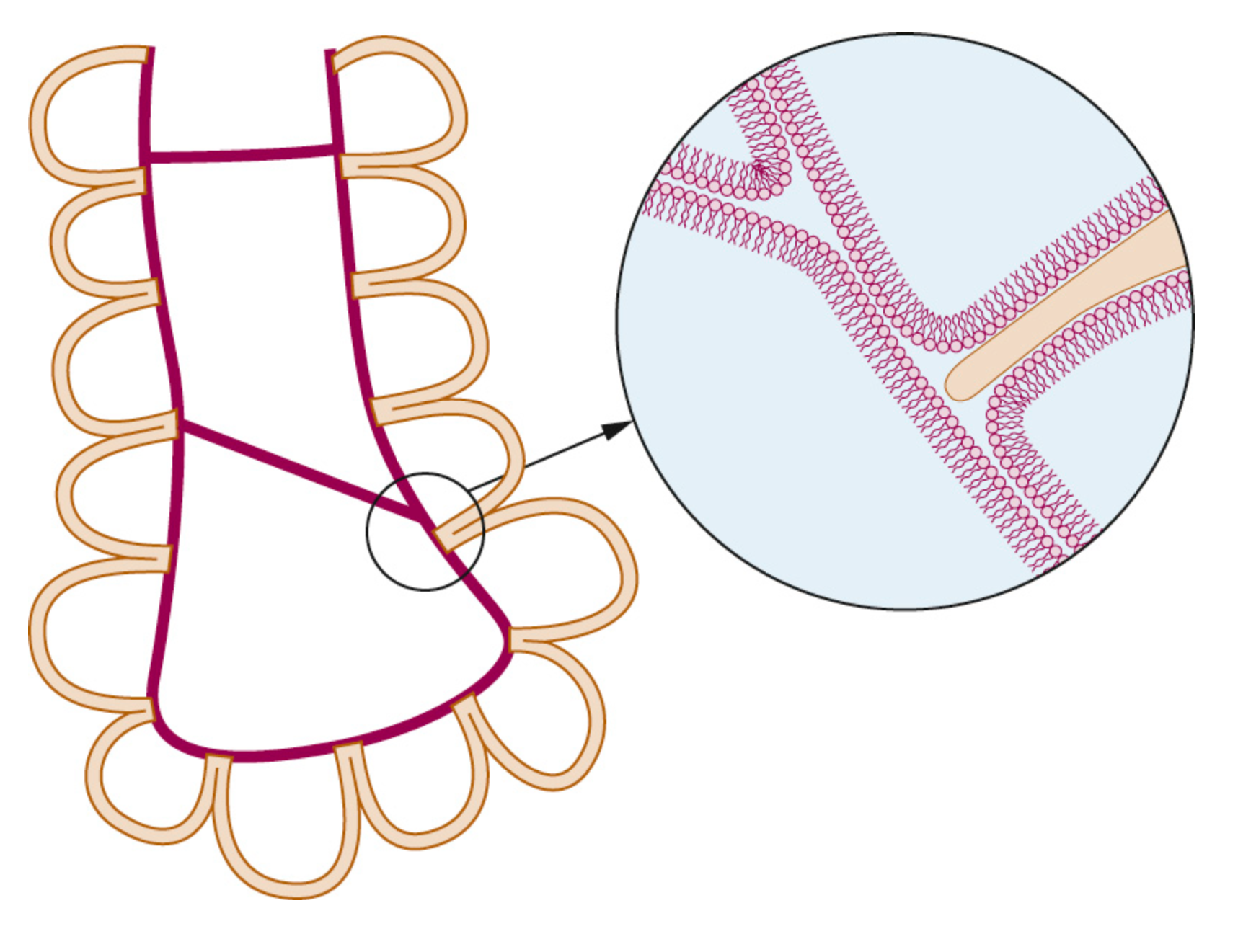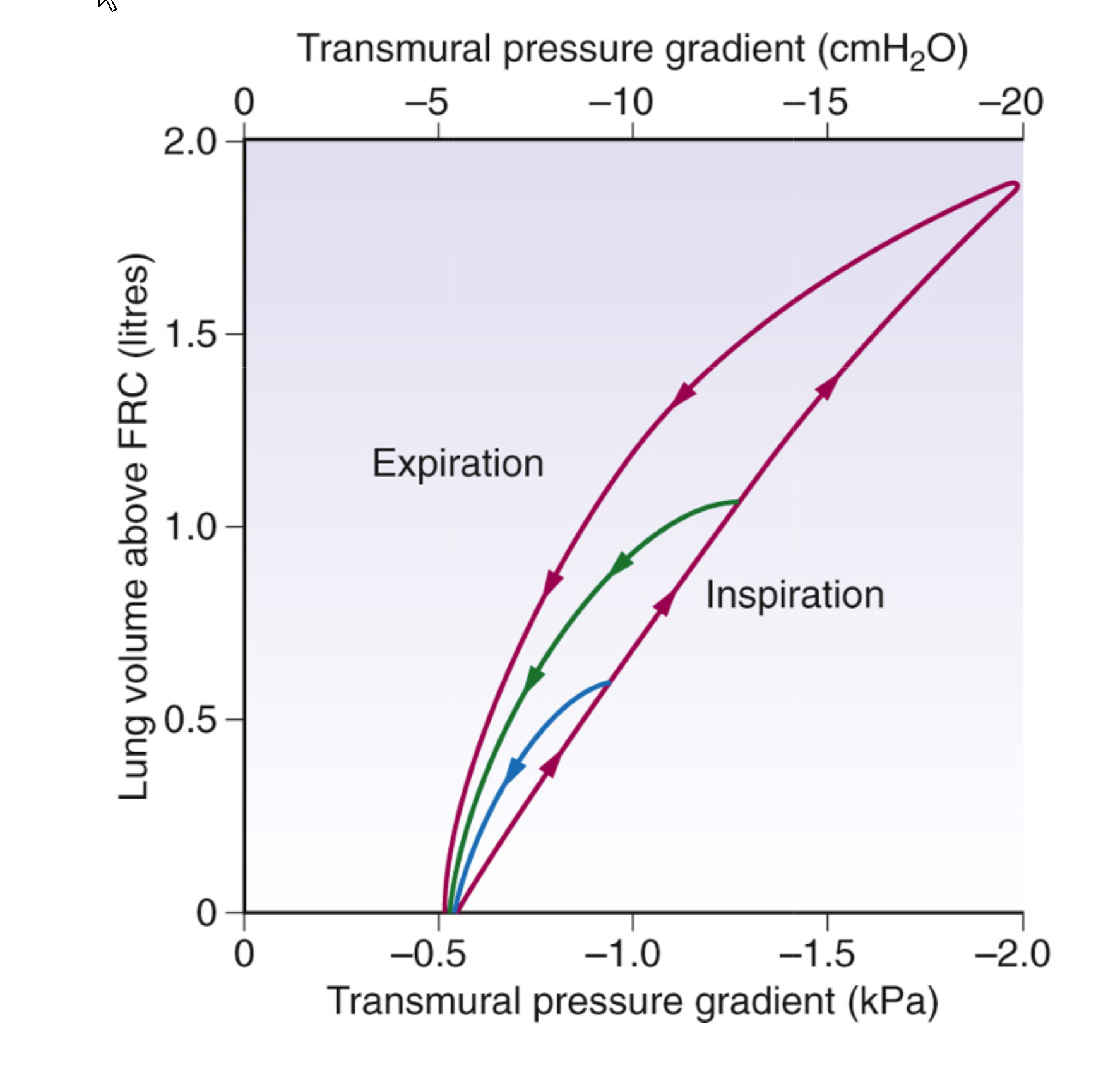Created by Jiří Kofránek
Key points
For many years it was thought that the recoil of the lung was due entirely to stretching of the yellow elastin fibres present in the lung parenchyma. In 1929 von Neergaard (see section on Lung Mechanics in online Chapter 2: The History of Respiratory Physiology) showed that a lung completely filled with and immersed in water had an elastance that was much less than the normal value obtained when the lung was filled with air. He correctly concluded that much of the ‘elastic recoil’ was due to surface tension acting throughout the vast air/water interface lining the alveoli.

Static plot of lung volume against transmural pressure gradient (transoesophageal pressure relative to atmospheric at zero air flow).

A: Pressure relations in two alveoli of different sizes but with the same surface tension of their fluids on their surfaces.
B: The changes in surface tension in realation of the area of the alveolar lining film.
C: Pressure relations in two alveoli of different sizes when allowance is made for the probable changes in surface tension.

Relationship between lung volume and the difference in pressure between the alveoli and the intrathoracic space (transmural pressure gradient). The relationship is almost linear over the normal tidal volume range. The calibre of small air passages decreases in parallel with alveolar volume. Airways begin to close at the closing capacity, and there is widespread airway closure at residual volume. Values in the diagram relate to the upright position and to decreasing pressure. The opening pressure of a closed alveolus is not shown.
PA - alveolární tlak, PB barometrický tlak, Ppl intrapleurální tlak
Schematic diagrams of alveoli to illustrate conditions under which static and dynamic compliance may differ. (A) Represents a theoretically ideal state in which there is a reciprocal relationship between resistance and compliance resulting in gas flow being preferentially delivered to the most compliant regions, regardless of the state of inflation. Static and dynamic compliance are equal. This situation is probably never realized even in the normal subject. (B) Illustrates a state that is typical of many patients with respiratory disease. The alveoli can conveniently be divided into fast and slow groups. The direct relationship between compliance and resistance results in inspired gas being preferentially delivered to the stiff alveoli if the rate of inflation is rapid. An end-inspiratory pause then permits redistribution from the fast alveoli to the slow alveoli.ddajnost